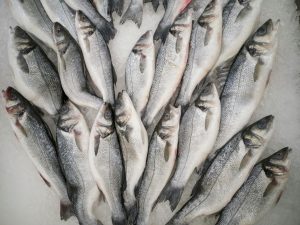Exploring the Tiny World of Molecular Gastronomy at Home
Welcome to the world of molecular gastronomy, where food becomes an art form and ingredients transform into a playful masterpiece. This culinary technique, also known as modernist cuisine, has revolutionized the way we look at food and cooking. From spherification to foams and gels, we explore the tiny world of molecular gastronomy and how you can bring it into your own home.
The Science Behind Molecular Gastronomy
Before we dive into the world of molecular gastronomy, it’s important to understand the science behind it. Simply put, molecular gastronomy is the study of the physical and chemical transformations that occur in food during cooking. It focuses on the chemical and physical processes that take place during food preparation, rather than just the traditional methods of cooking.
Spherification: The Art of Creating Edible Spheres
One of the most iconic techniques in molecular gastronomy is spherification, which involves transforming liquid into a gel-like sphere using calcium chloride and sodium alginate. This technique was first popularized by renowned Spanish chef Ferran Adrià and has become a staple in modernist cuisine. Whether it’s caviar-like balls bursting with flavor or encapsulated cocktails, spherification adds an element of surprise and texture to any dish.
Foams: The Secret to Light and Fluffy Textures
Another technique commonly used in molecular gastronomy is foams, which involve trapping air bubbles in a liquid using a whipping siphon. These foams can range from savory to sweet and add a light and airy texture to dishes. Chefs have experimented with various flavors and ingredients to create foams that are not only delicious but also visually appealing.
Gels: From Fruit Jellies to Meat Consommé
Molecular gastronomy also relies heavily on gels, which are created by using gelling agents such as agar agar or gelatin. These gels can be made into a variety of textures, from soft and creamy to firm and bouncy. While fruit jellies are a common use of gels, chefs have also used them in creative ways such as turning meat consommé into a solid jelly or creating a gel skin to encase a dish.
Bringing Molecular Gastronomy into Your Home Kitchen
With the rise of molecular gastronomy in restaurants and cooking shows, many home cooks have been eager to try their hand at this culinary technique. While it may seem intimidating, it’s actually quite accessible and can be easily incorporated into home cooking with the right tools and ingredients.
Essential Equipment
To get started with molecular gastronomy at home, you’ll need a few essential tools such as a digital scale, a precision thermometer, and measuring spoons. Additionally, a whipping siphon and a set of gelling agents such as agar agar or sodium alginate are necessary for creating foams and gels. It’s also important to have a good understanding of food safety and handling when working with these ingredients.
Ingredients for Experimentation
The beauty of molecular gastronomy is its ability to transform everyday ingredients into something unique and unexpected. A simple fruit juice can become a caviar-like sphere or a traditional soup can be turned into a gel. Don’t be afraid to experiment with different flavors and textures, and have fun with it!
Follow Recipes and Techniques Closely
While experimentation is encouraged, it’s important to follow recipes and techniques closely when first starting out with molecular gastronomy. The measurements and ratios of ingredients are crucial for achieving the desired results. Once you become more comfortable with the techniques, you can start to adapt and create your own dishes.
Exploring the tiny world of molecular gastronomy at home opens up a whole new world of culinary possibilities. From unique flavors and textures to stunning presentation, this modernist cuisine adds a touch of creativity and science to your cooking. With the right tools and ingredients, you can create your own molecular masterpieces in the comfort of your own kitchen.











